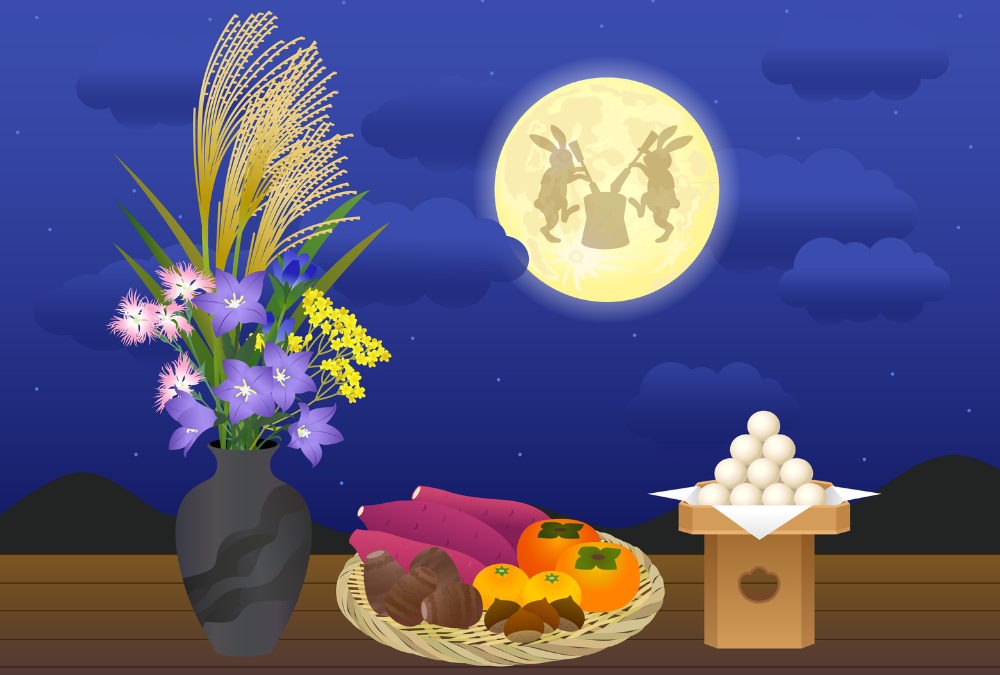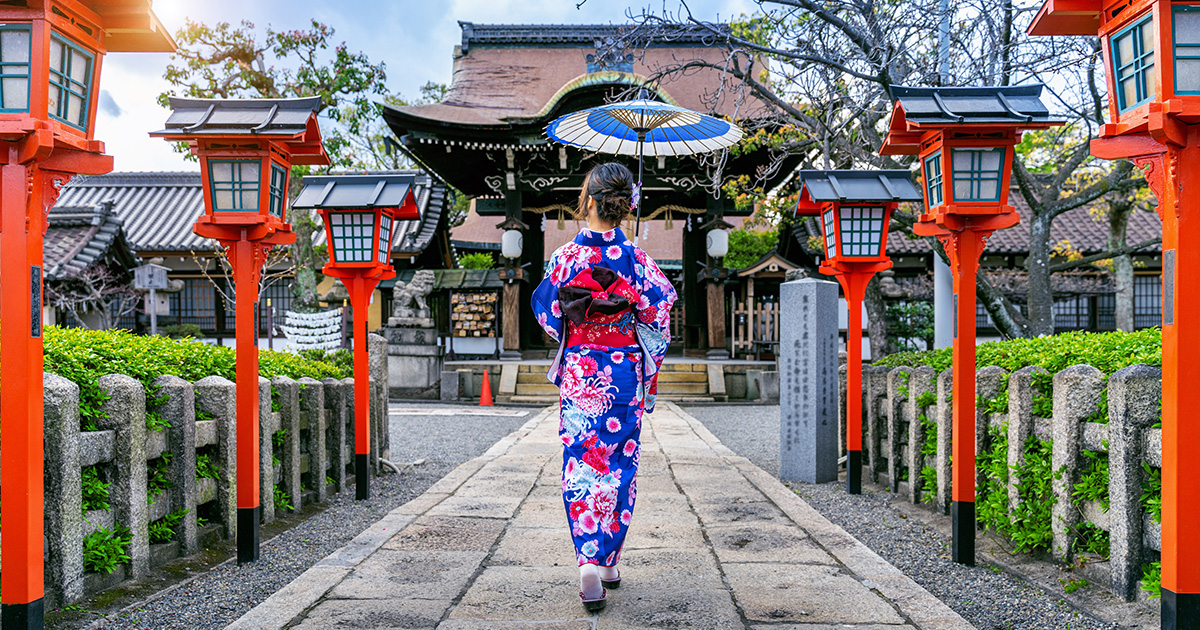It is now late September, the cooler season has finally arrived in Japan.
Walking around town, I can sense the arrival of autumn from the sound of insects, flowers in bloom, and the clothing of people passing by. Autumn is also the season of harvest, and many agricultural products, including rice, become more delicious. In this post, I will introduce one such Japanese autumn event, “Otsukimi” (お月見).
What is Otsukimi?
Otsukimi is one of Japanese traditional events in autumn. In Otsukimi, literally meaning “moon viewing”, Japanese people give thanks for the year’s harvest and wish for a good harvest in the future, while viewing the beautiful autumn moon. Otsukimi is held multiple times a year, but the two main occasions are “Jugoya” (十五夜) and “Jusanya” (十三夜).
The most famous is Jugoya. It refers to August 15 on the lunar calendar, also known as “Chushu-no-Meigetsu” (mid-autumn moon), and is said to be the most beautiful day of the year. “Chushu” means the middle of autumn (July to September) in the lunar calendar, which falls in September in the current calendar.
The second famous is Jusanya, which falls on September 13 of the lunar calendar, about one month after Jugoya, and is said to be the day on which the moon is next most beautiful after Jugoya.
Although there are various theories, it is believed that Jugoya was introduced to Japan from China during the Nara and Heian periods (794-1185). On the other hand, Jusanya is a uniquely Japanese event. Viewing the moon only on Jugoya is called “Katatsukimi”, which has been considered a bad omen since ancient times, while it is said to be good luck if both the Jugoya and Jusanya nights are clear in the sky.
What do people do at Otsukimi?
The illustration below depicts a typical image of Otsukimi.
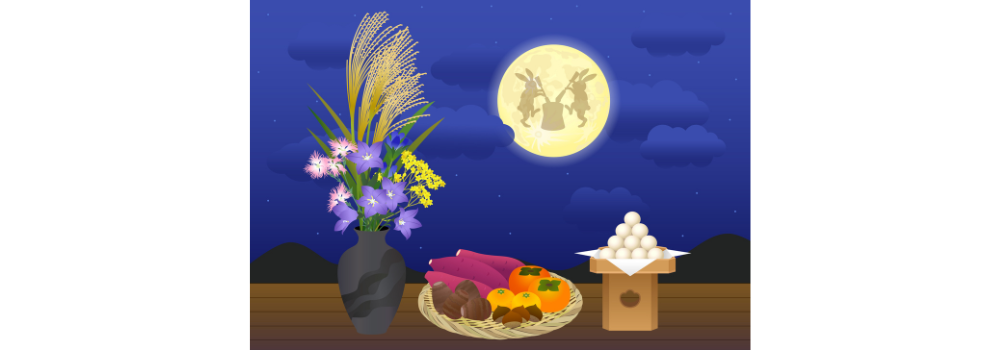
Otsukimi is not just a day for viewing the moon. As I wrote a little at the beginning of this post, Otsukimi is also a day to give thanks for the autumn harvest, so offerings of autumn harvest items are made, as shown in the illustration above. Lets see each of these offerings in the following sections.
Otsukimi Offerings (1): Tsukimi-Dango
First of all, “Tsukimi-dango” is an essential part of Otsukimi. Tsukimi-dango is characterized by the shape of a pyramid of many Dango (rice dumpling) on a plate or white paper. The shape of Dango varies from region to region. For example, in the Kanto region, the Dango are usually round in shape to resemble a full moon, while in the Kansai region, such as Osaka and Kyoto, Dango are usually long and thin to resemble the shape of potatoes, the harvest of the season. The number of Dango to be offered varies from family to family with some families offer 15 for Jugoya and 13 for Jusanya, while others offer 12 in normal years and 13 in leap years, according to the number of full moons of the year.
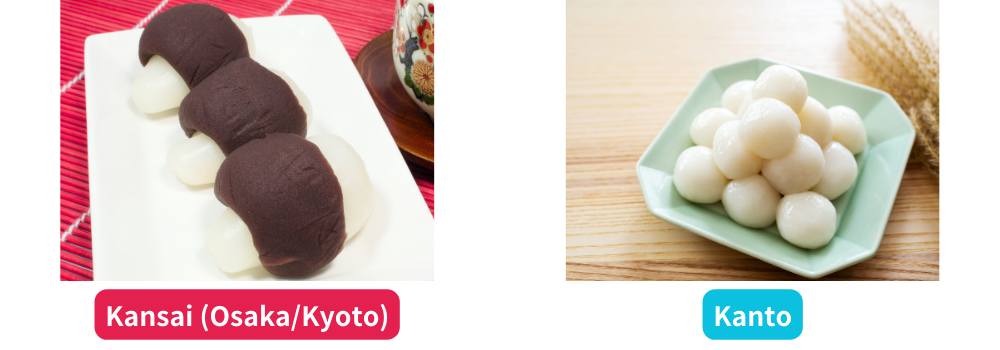
Otsukimi Offerings (2): Silver Grass, Taro, Sweet Potatoes, Chestnuts, Soybeans
Along with Tsukimi-dango, autumn harvests are offered. For example, on Jugoya, silver grass and taro, which are harvested around that time, are offered and on Jusanya, when autumn is deepening, sweet potatoes, chestnuts, soybeans, and other autumnal crops are offered. In this way, Japanese people give thanks for the harvest up to that time and pray for a good harvest in the future.
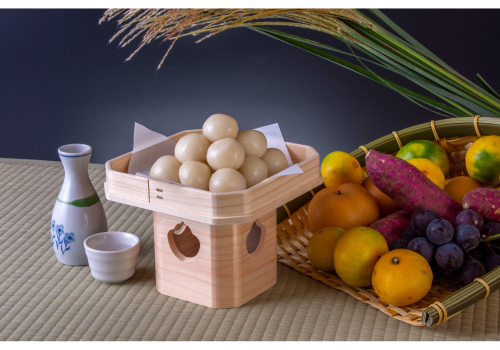
Otsukimi and Rabbit
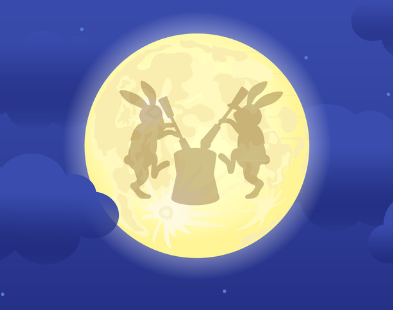
As shown in the Otsukimi illustration, it is said that on a beautiful full moon such as Jugoya or Jusanya, rabbits are pounding rice cakes. Indeed, if you look closely at the full moon, it seems as if two rabbits are pounding rice cakes. This is because the shadows of the moon’s craters, as seen from Japan, look like two rabbits and mortars and pestles for making rice cakes.
So why rabbits?
It is believed that this originates from an Indian myth. I won’t go into detail here, but according to this myth, a god sent a mercifully deceased rabbit to the moon. There are various theories as to why rice cakes are made for the gods who sent them to the moon, some say it is so that the rabbits will not have trouble finding food by the moon, others say it is because “Mochizuki,” meaning a full moon, sounds similar to “Mochitsuki” (rice cake pounding).
When is this Year’s Otsukimi?
I wrote Jugoya is on August 15 and Jusanya is September 13 of the lunar calendar, but when do they fall on the current calendar?
The answer depends on the year. The lunar calendar and the current calendar (Gregorian calendar) have different ways of counting the days, so the days are not exactly the same. Therefore, the days of Otsukimi change every year.
This year (2023), Jugoya and Jusanya will be on September 29 and October 27, respectively.
I hope you all enjoy the beautiful moon along with the autumn harvest!

